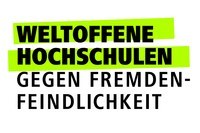
Qualifikationsarbeiten
Grundvorraussetzungen
Generell sind wir offen für Studierende aller Bereiche aus dem FB4, jedoch sollten Sie idealerweise mindestens eine der folgenden Veranstaltungen besucht und bestanden haben:
* Grundlagen der IT-Sicherheit,
* Datenschutz,
* Security in Networked Systems (SiNS),
* IT-Risk Management,
* Proseminar / Seminar in IT-Sicherheit,
* Projektpraktikum / Forschungspraktikum in IT-Sicherheit.
Vergabe von Qualifikationsarbeiten:
Hier finden Sie Informationen zur Vergabe von Abschlussarbeiten. Senden Sie bei Interesse bitte eine E-Mail an itsec-lehre@uni-koblenz.de mit
- Studiengang,
- aktuellem Notenauszug (KLIPS),
- dem Thema, das ausgeschrieben wurde,
- einem kurzen Motivationsschreiben,
- und dem von Ihnen gewünschten Bearbeitungszeitraum (von/bis),
oder bei eigenen Vorschlägen oder Wünschen
- eine Liste mit Themen, die Sie gerne bearbeiten würden.
Je konkreter Sie bei Ihrer Beschreibung für ein Wunschthema sind, desto schneller und besser können wir auf dieses eingehen. Idealerweise, jedoch nicht zwingend notwendig, reichen Sie nebst Thema ein kleines Exposé ein, in dem Sie den Hintergrund erläutern und ggf. eine Forschungsfrage (mit sicherheitsrelevanten Aspekt) definieren
Ablauf und Betreuung:
Vor der Anmeldung der Abschlussarbeit, unabhängig von möglichen Kollaborationen mit weiteren Parteien, einigt man sich mittels eines Proposals bzw. Exposés nochmal genau auf das Thema. Hierbei erarbeiten und formulieren Sie unter Betreuung eine Forschungsfrage.
Dieses Proposal umfasst 4-6 Seiten und besteht idealerweise aus den Kapiteln:
1. Einführung
2. Grundlagen / Hintergrund
3. Verwandte Arbeiten
4. Methodik
5. Zeitplan (vorzugsweise Gantt-Chart)
6. Limitationen / Ausblick (optional)
7. Literaturverzeichnis
- Proposal:
- Wir treffen uns bis zu zweimal zum Besprechen des Proposals.
- Thesis:
- Nach der Anmeldung der Arbeit wird erwartet, dass die Studierenden am monatlichen Oberseminar teilnehmen, bei dem individuelle Fragen zur Arbeit gestellt werden können.
- Außerdem bieten wir ein monatliches Gespräch mit dem Betreuer an.
- 3-4 Monate nach Anmeldung sollte die Struktur und die Inhaltsangabe der Arbeit vollständig sein.
- 6-8 Wochen vor Abgabe der Arbeit sollte uns ein Entwurf der Arbeit zugesandt werden, den wir dann kommentieren (die Arbeit wird von den Betreuern nicht korrekturgelesen, allerdings werden wir Sie auf eventuelle gravierende Mängel hinweisen.)
Ausgeschriebene Arbeiten:
Im weiteren finden Sie hier die ausgeschriebenen Arbeiten und Kooperationsarbeiten. Beachten Sie, dass auch für diese die oben genannten Grundvoraussetzungen gelten.





